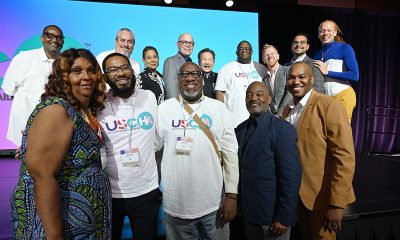COMMENTARY
Ed Buck’s arrest should spark outrage over gay meth epidemic
Community must react and save lives
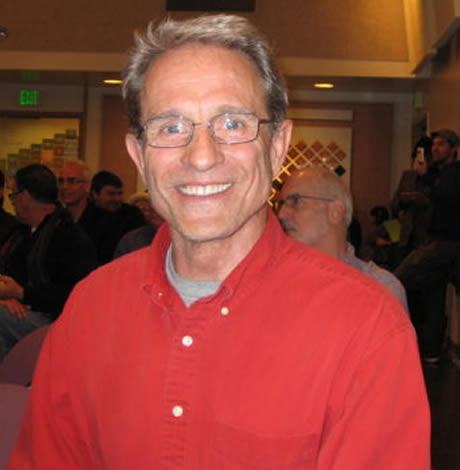

Ed Buck (Los Angeles Blade file photo by Karen Ocamb)
Recently, one-time Democratic donor Ed Buck was indicted following two drug overdose deaths in his West Hollywood apartment in 2017 and 2019. His arrest was long overdue, after continued allegations by Black gay men that Buck had forced them to do drugs in his apartment house and demands for answers coming from the LGBTQ+ community for two years with no action by authorities in response.
But amidst all the controversy about how Buck got away with this horrendous alleged behavior for so long, there is one piece missing: a real, in-depth conversation about the gay community’s ongoing struggle with crystal methamphetamine addiction.
The videos of Buck during his appearance at the Los Angeles County Courthouse show a gaunt shadow of a man. He was skeletal, with deep caverns where cheeks used to be and veins protruding from his neck to his forehead. While court filings charge that Buck’s sexual proclivity was to inject Black male escorts with meth and there is no proof yet that Buck himself was a meth addict – he appeared with the look of so many gay men — of all ages — who are addicted to meth.
It’s beyond time to start talking about it.
I’ve seen the devastating impacts of meth addiction firsthand. One of my closest friends started using crystal meth a couple of years ago. Previously a successful businessman, he has now lost all of his friends, his family and his business. He spends his days searching for meth. Ten years ago, I lost a partner to crystal addiction. He relapsed after two years of sobriety and eventually died on the street.
Meth is dangerous for many reasons — partially because it’s so cheap and can be made in a frying pan at home using sinus, cold and other over-the-counter medicines. It’s also readily available, being sold on the streets, on “hook-up” and dating apps, and in gay bars — often under the seemingly innocent name “Tina.”
At St. John’s Well Child and Family Center, the community health center I lead, we treat thousands of members of the LGBTQ+ community — and the overwhelming majority of patients who access treatment at our substance abuse programs are addicted to crystal meth.
As it stands, as little as 5% of crystal meth users can get and stay sober without institutional help. Yet this raging epidemic which has plagued and ravaged the gay community for over 20 years still bears little mention from national LGBTQ+ organizations, gay elected officials, and the mainstream media. This means there are few programs, resources, and virtually no government or private grants in place to combat a drug addiction so lethal that it literally alters the chemical make-up of the brain.
Additionally, in the gay community meth is linked to sex – meaning there is less inhibition and more risk for HIV and other STDs. And while PrEP may help prevent HIV infection, the CDC reports that syphilis, gonorrhea, and chlamydia continued their record-breaking rise in 2018.
So many members of the LGBTQ+ community have already been impacted by the crystal meth epidemic – friends, lovers, partners and community leaders lost to the ravages of the worst drug we have ever seen. If we’re not careful, it could take countless more lives.
In my twenties, I lost countless friends and two partners to the AIDS epidemic. Today, I can’t help but draw correlations to the present-day plague ravaging my community.
During the AIDS epidemic, service organizations were formed and ACT-UP mobilized gay men and their allies to the streets. Many of us became politicized by fighting the AIDS epidemic and the refusal of the government to act. It’s time for us to take similar action now and start mobilizing around our community’s struggles with meth.
It is patently true that if the DA’s office had moved quickly in the Buck case, lives would have been saved. It is just as true that we are all standing by, silent, as thousands of our gay brothers die in the scourge of meth addiction.
We need political action, adequate funding to treat those addicted, new methods to break the cycle of addiction to this horrible drug, and the development of innovative education and prevention strategies to save our people from the death spiral of crystal meth addiction. But all of that starts with LGBTQ+ folks being honest about what’s going on in our community. We must begin to heal and move past this together.
Jim Mangia is president and CEO of St. John’s Well Child and Family Center, a nonprofit community health center providing services at 18 sites in downtown and South Los Angeles.
COMMENTARY
Don’t miss the liberation in the silencing of Charlie Kirk
In the aftermath of the assassination, we are now drowning in a pool of speech violence that could lead to an American catastrophe.
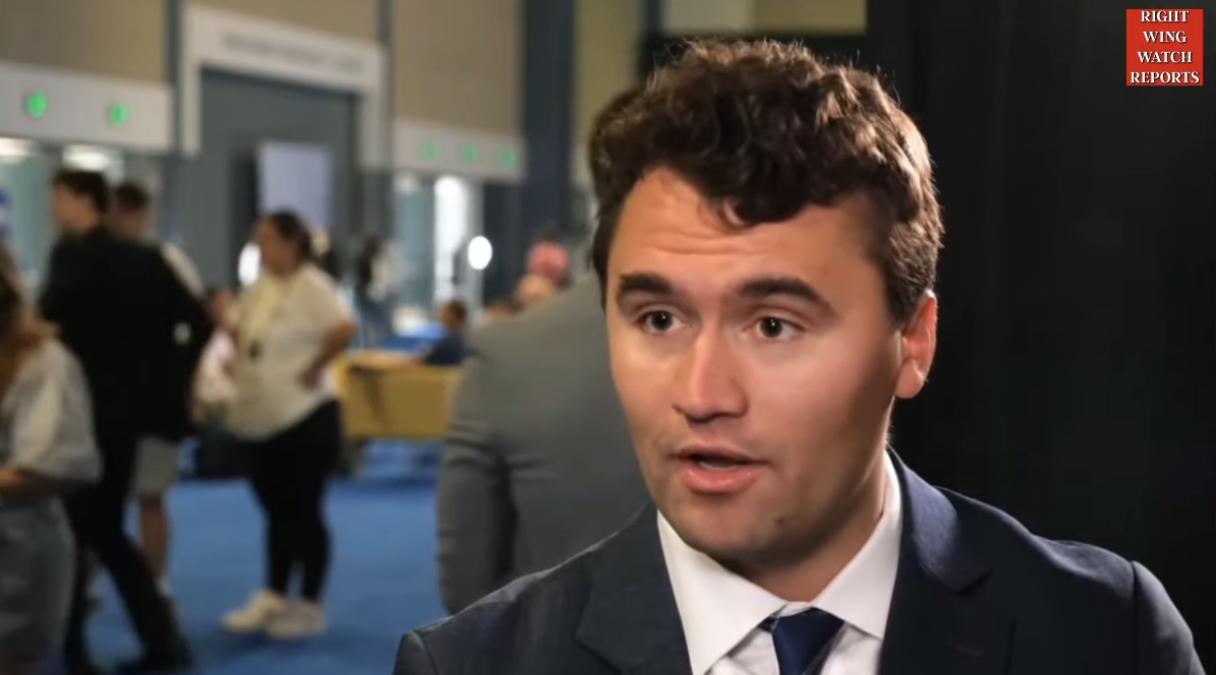
Trans advocates have argued for years that anti-trans speech leads directly to anti-trans violence, and were eye-rolled to oblivion. Charlie Kirk, whether as a mouthpiece for what politicians dared not say out loud, or as a hype man keeping the politics of resentment ever inflamed, built a career out of weaponizing right-wing talking points, fueling a culture of violence that ultimately killed him, and now threatens all of us.
The trail of harm caused by Kirk’s rhetoric is not abstract—it lines up with real blood and real deaths. When he blasted the phrase “China virus” into cultural discourse—parroted days later by Trump—anti-Asian hate crimes spiked. His COVID misinformation spread right alongside hundreds of thousands of needless fatalities. When he compared abortion to the Holocaust, he sanctified the moral panic that cleared the way for Roe v. Wade’s destruction—and pregnant people now die totally preventable deaths like it’s 1972 again.
Kirk also called gender-affirming care for youth “child mutilation,” language now enshrined in legislation that has severed a lifeline for vulnerable kids and their families. He urged that trans people be “taken care of the way society handled us in the 1950s and 60s,” that is, with lobotomies, shock therapy, and police persecution. He spent his last moments on earth promoting the conspiracy theory that trans people make up an imaginary majority of mass shooters—classic fascist scapegoating with the obvious aim of inciting more violence against trans people.
The irony cannot be overstated that his actual last words, spoken as he was shot, minimized the human toll of gun violence. In death, Charlie Kirk proved the point that sowing violence with words reaps real-world tragedy. He gave trans activists the last word on the matter forever.
And now we know the truth: Kirk was not killed by a leftist or a trans activist, but by Tyler Robinson—a young white man evidently radicalized by the toxic masculine internet culture that Kirk and his allies normalized. When you cultivate a culture of hate and fear, when you normalize conspiracy and scapegoating, when you insist that violence is the only solution, eventually your own people will turn those weapons back on you. And your personal world is left bereft and traumatized, just like the 47,000 families affected by gun violence last year alone.
In the aftermath of the assassination, we are now drowning in a pool of speech violence that could lead to an American catastrophe. That is, it does if we miss the opportunity for real liberation that it offers us.
The Right cannot stop itself from using speech violence—terror carried out with words, designed to destabilize and intimidate. In the hours after the assassination, Republican leaders used Kirk’s blood to paint a target on our backs, issuing statements rife with misinformation that unleashed a wave of bomb threats across the country, forcing schools, hospitals, and community centers to evacuate.
It seems as if they know no other language. But do we? Or have we become radicalized in the same way, just with different targets? Understandable as it may be, and satisfying as it may feel, the Left’s memefied celebration of Kirk’s death only amplifies the violence he put into the world.
A friend told me about a teacher at their children’s Miami school who tweeted “Karma’s a bitch;” the school was immediately bombarded with mass shooting and bomb threats. I am publishing this article anonymously due to the doxxing and threats happening to anyone who doesn’t lionize Kirk online right now. I won’t be silenced, but I won’t risk my own physical safety, either, and that is how bad it really is right now. This even causes me to question my anger at Center-Left figures like Gavin Newsom, who seem to be glossing over the harm Kirk caused in his life in their public statements—maybe they’re just afraid of getting assassinated themselves.
We have to see the bigger picture: only Right-wing politicians and billionaire-owned platforms profit from making Americans hate each other to the point of physical violence. Speech that incites violence is not freedom of expression; it is a tool of fascism. It sows chaos, breeds fear, normalizes inaction, allows politicians to consolidate power, and enables the ultra-wealthy to “buy the dip,” profiting off instability. At the end of this cycle, ordinary people will be less safe, less free, and more hopeless—unless we end it.
One of the most radical progressive things we can do right now is refuse hate speech altogether. We have an opportunity to liberate ourselves by creating where Kirk sought to destroy. Stop participating in this angry tit-for-tat, regardless of how righteous your emotions may feel. Don’t share the memes. Don’t feed the cycle. Don’t let your kindness and goodwill corrode by mimicking the hate Kirk aimed at us.
Roll your eyes, but also consider this approach: When you feel the urge to fire back online, step away. Then imagine a possibility. Then take one action that feeds your soul. Call a friend. Organize something that makes your community measurably better. God knows, the Left needs a plan right now—we can use these provocations as fuel to build one.
Of course, it takes a kind of saintly strength to live this principle—one I’m not sure any of us possess right now. But we can resist fascism if we start by noticing the urge to answer hate with hate, and jiu-jitsu that energy into strengthening ourselves and our communities.
Remember the classy response to the death of Fred Phelps, leader of the hate organization also known as Westboro Baptist Church. Queer activists held signs for his family to see at his funeral: WE ARE SORRY FOR YOUR LOSS. Members of his family have since become outspoken against their own work. A few picketers still find their only meaning in protesting funerals, but when was the last time you ever cared about that sad little man, or what he did?
One head of the Far Right media ecosystem hydra has been cut off. That is not a cause for celebration, but it is a real opportunity. Figures like Charlie Kirk are not just another talking head—he was a cult figure who can’t simply be swapped out. There is now a vacuum, and the questions remain: Who fills it? With what?
We have just inherited the gift of a world free of Charlie Kirk’s vitriol. Instead of polluting our future with more of the same, let’s seize this opening and direct our energy toward manifesting the world we wish out loud for every day.
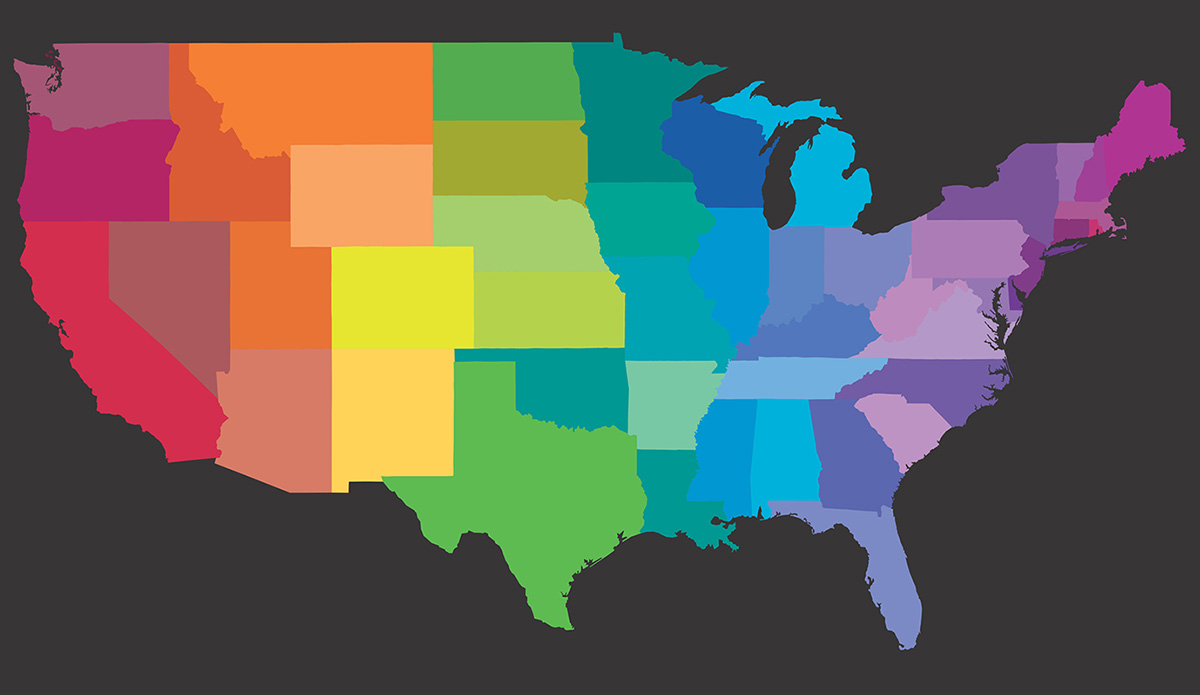
A popular 1980s slogan in the LGBTQ+ community was “We are everywhere.” We truly are part of every profession, every race, gender, class, religion, and more.
Just as other communities have media outlets that take a “by us, for us” approach to news and information, there has been a gay press in fits and starts going all the way back to 1924, when a U.S. postal worker named Henry Gerber and his pals launched Friendship & Freedom in Chicago. The police arrested Gerber and shut the newsletter down.
More than 100 years later, the state of LGBTQ+ media might be better than what Gerber experienced, but due to discrimination and political headwinds — including corporate backsliding on diversity marketing — there is a struggle to serve the community with strong local LGBTQ+ journalism.
Which is why I set out in late 2024 to start to document the current state of local LGBTQ+ media in the U.S. Thanks to a grant from the MacArthur Foundation, The LGBTQ+ Media Mapping Project, hubbed at the News is Out collaborative sponsored by the Local Media Foundation, is now available. With a map developed by City University of New York’s Craig Newmark Graduate School of Journalism Center for Community Media, we have a better sense of the strengths and weaknesses facing this niche within the media world.
While I had published a book on LGBTQ+ media several years ago (Gay Press, Gay Power), I still was not prepared for just how precarious this media ecosystem is today. Our report found 18 states with no LGBTQ+ media and that many city-based media are unable to cover their entire states. Millions of people have no local LGBTQ+ media coverage.
During focus groups, we asked the publishers and editors just what needs they have, beyond an obvious infusion of cash. They are seeking to diversify their revenues, to adapt to new technologies, grow their audiences, and to better serve neighboring communities. There are a wide range of recommendations in the report, things the outlets themselves see could be valuable.
Philanthropy has barely stepped into this part of the media universe in part because almost all LGBTQ+ media, both local and national outlets surveyed, are for-profit. But now that more funders see a need to support local for-profit media, this could open up an opportunity to support more of these outlets. Given the political backlash against the community, now is not the time to push these businesses to become non-profit, as that could be a new single-point failure.
Our report also found that during this time of crisis, there has been a surge in audience, and more willingness to work together. The participants in this research indicated a strong willingness to collaborate across both business and editorial opportunities. But such efforts require an investment of both time and money. Support is needed.
We surveyed both legendary local LGBTQ+ newspapers and newer online outlets. More research should be done on the creator/influencer world, which includes many LGBTQ+ people. And while local LGBTQ+ media was the primary focus of this research, we did survey national LGBTQ+ media. I was surprised how precarious many of these outlets are as well.
The entire LGBTQ+ media universe could use a strategic plan and an infusion of new resources, which I hope funders will step up to support.
In the meantime, readers can support LGBTQ+ media by signing up for their newsletters, and donating or subscribing if they have those options.
Please see the report for a full slate of recommendations, here: https://newsisout.com/lgbtq-media-mapping/. The map is hosted on the Craig Newmark Graduate School of Journalism website here: https://lgbtqmediamap.journalism.cuny.edu/ . We will update the map as new outlets are found; indeed, we have already added new dots to the map.
Tracy Baim is the co-author of The LGBTQ+ Media Mapping Project report with Hanna Siemaszko. She is the co-founder of the 40-year-old Windy City Times LGBTQ+ newspaper, and is the executive director of Press Forward Chicago, a journalism pooled fund part of the national Press Forward movement.
Commentary
Claiming space, leading boldly: A new chapter in HIV fight
A time of extraordinary possibility and profound peril
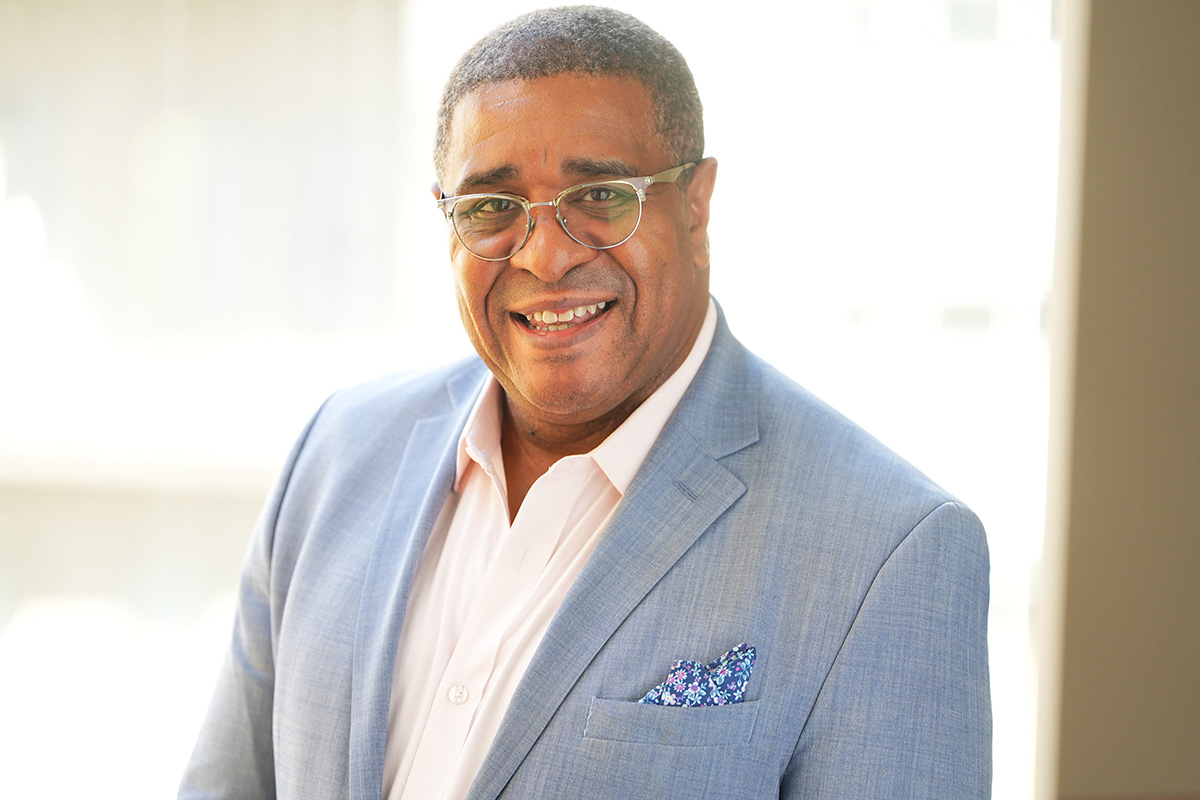
I step into the leadership of the National Minority AIDS Council at a time of both extraordinary possibility and profound peril. We are living in a moment where science has given us the tools to end HIV as a public health threat—PrEP, PEP, U=U, long-acting injectables, and decades of research that have transformed what was once a death sentence into a manageable condition. And yet, the systems meant to deliver these tools are under siege.
Public health is being politicized. Science is being undermined. Civil and human rights are being rolled back. The safety and security of LGBTQ+ people—especially Black and Brown queer and trans folks—are increasingly fragile. In some states, even saying the word “gay” in a classroom is considered controversial. In others, access to gender-affirming care is being stripped away. And all the while, HIV continues to disproportionately impact communities that have been historically marginalized and medically neglected.
So yes, I step into this role with a sense of urgency. But I also step in with pride. Because I know what it means to be underestimated. I know what it means to be told you don’t belong. As a Black, church-going, gay boy from the South Side of Chicago, I grew up in a world that didn’t always see me, didn’t always protect me, and certainly didn’t expect me to lead a national movement. But here I am. And I’m not alone.
I carry with me the legacy of those who came before—of Marsha P. Johnson and Bayard Rustin, of Magic Johnson and Ryan White, of the activists who lay down in the streets and shouted “Silence = Death” until the world finally listened. I carry the wisdom of Black grandmothers who raised generations through grief and grit. I carry the fire of young people who refuse to be silent, who organize, who vote, who demand better.
At NMAC, we are not just fighting a virus, we are fighting the systems that allow it to thrive. We are fighting racism in healthcare, transphobia in policy, and stigma in every corner of society. We are fighting for Black and Brown communities, for LGBTQ+ youth, for aging people living with HIV who deserve dignity, not invisibility.
This is not just a job, it’s a calling. And it’s a call to action for all of us.
We must raise our voices louder than the attacks. We must claim space in rooms that were never built for us. We must demand funding that reflects the urgency of our communities’ needs. We must protect the programs that work—like Ryan White, HOPWA, and PEPFAR—and expand access to innovations like long-acting PrEP.
We must also tell the truth: that ending the HIV epidemic is not just a scientific challenge, it’s a justice challenge. It requires confronting poverty, housing insecurity, criminalization, and the erosion of civil rights. It requires centering people who live at the intersection of multiple oppressions. It requires love, radical empathy, and unapologetic leadership.
I am ready to lead. But I cannot do it alone.
To every activist, provider, policymaker, and person living with HIV: this is your movement too. Your voice matters. Your story matters. Your survival is revolutionary.
Let’s build a future where HIV is no longer a threat—not because we ignored it, but because we faced it head-on. Let’s build a future where public health is protected, science is respected, and every person—regardless of race, gender, or sexuality—can live with dignity and thrive.
Let’s build it together.
Harold Phillips is incoming CEO of National Minority AIDS Council.
COMMENTARY
A call to act, not just observe, this Suicide Prevention Month: If we meant it, we would fund it
Despite September being Suicide Prevention Month, crucial mental health are being defunded across the country. Real prevention needs more than awareness campaigns.
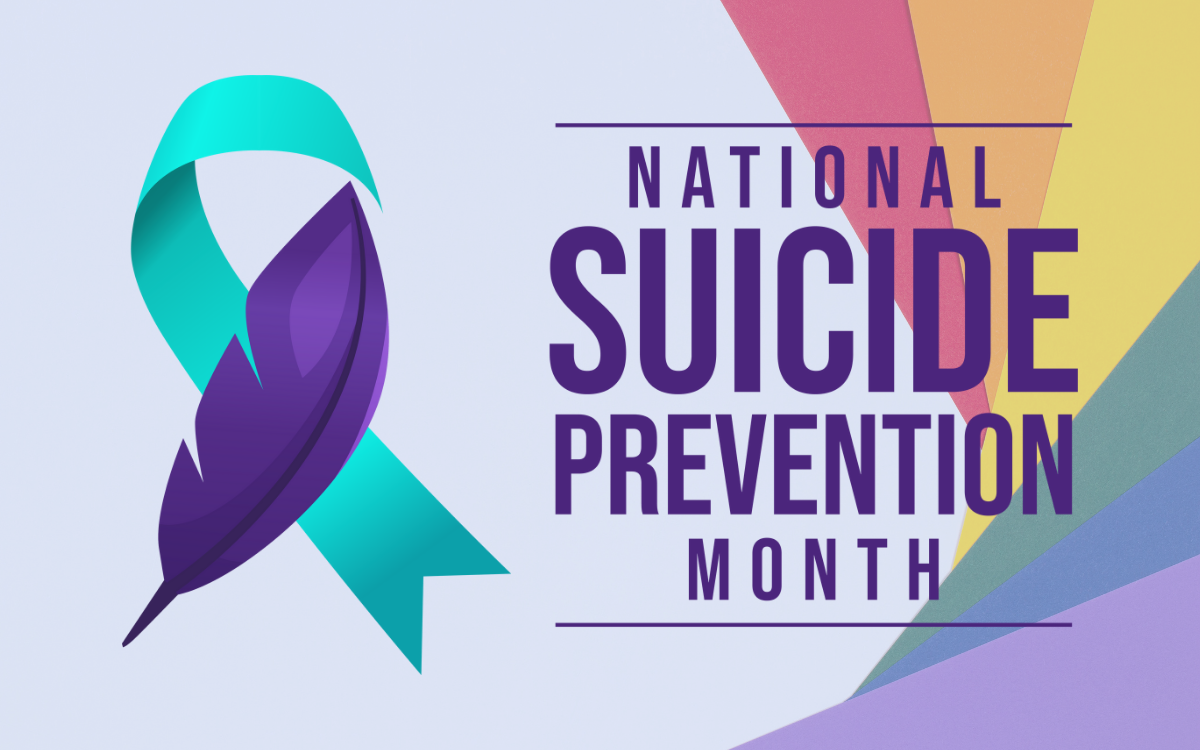
September is Suicide Prevention Month, a time to address often-ignored painful truths and readdress what proactivity looks like. For those of us who have lost someone they love to suicide, prevention is not just another campaign. It is a constant pang that stays.
To lose someone you love to suicide is to have the color in your life dimmed. It is beyond language. Nothing one can type, nothing one can say to a therapist, no words can ever convey this new brand of hurting we never imagined before. It is an open cut so deep that it never truly, fully heals.
Nothing in this world is comparable to witnessing someone you love making the decision to end their life because they would rather not be than to be here. Whether “here” means here in this time, here in this place, or here in a life that has come to feel utterly devoid of other options, of hope, or of help, the decision to leave often comes from a place of staggering pain and a resounding need to be heard. The sense of having no autonomy, of being trapped inside pressure so immense it compresses the will to live, is no rarity. It is a very real struggle that so many adolescents and young adults carry the weight of every day.
Many folks in our country claim to uphold the sanctity of human life. But if that claim holds any validity or moral grounding, it would have to start with protecting the lives of our youth. Not only preventing their deaths but affirming and improving the quality of their lives. We need to recognize and respond to the reality that for too many adolescents and teenagers, especially those who are marginalized and chronically underserved, life does not feel so sacred. It feels damn near impossible.
Today, suicide is the second leading cause of death for Americans ages 10 to 24. That rate has almost doubled since 2007. Among queer-identifying youth, the statistics are crushing. Nearly 42% have seriously considered suicide in the past year, and almost 1 in 4 have attempted it. These are not just numbers. These are the children and teens we claim to care for and protect. These are kids full of potential and possibility who come to believe that their lives are too painful or meaningless to go on.
For our youth who identify as both queer and BIPOC, the numbers soar to even more devastating heights. Discrimination, housing insecurity, trauma (complex, generational, or otherwise), and isolation pile on the already stacked mental health risks. Transitional times like puberty, continuing education, coming out, or even being outed can all become crisis points. And yet, the resources available to support these youth remain far too limited, particularly in rural and underfunded communities.
We must also call out a disheartening truth. Suicide is not just a mental health issue but also a political one. Despite years of advocacy and an undeniable increase in youth mental health crises, funding for prevention is barely pocket change in regard to national budgets. In 2023, the federal government spent an underwhelming $617 million on suicide prevention efforts. To provide some perspective, that’s less than what we spend each year defending the border wall.
Meanwhile, school-based mental health services, one of the most effective means of reaching children and teens early, are being decimated. A $1 billion mental health grant program, which began after the Uvalde school shooting aiming to increase school counseling services, was recently pulled from hundreds of school districts. In some places, that left over 1,000 students for every 1 mental health provider. And in others, it left entire counties with zero youth therapists.
This rollback is not an isolated agenda. It operates in tandem with a cultural and legislative attack on the LGBTQ+ community and our access to affirming education, healthcare, and visibility. Programs that create safe spaces and lifelines are being wiped away. The LGBTQ+ line of the 988 suicide hotline, created to offer identity-affirming, culturally competent crisis support, was recently defunded, despite having provided help to over 1.3 million callers. The political message here is unmistakable. Only some lives, some pain, and some needs of a select group are worth the money and care.
I can’t help but contrast this with how our country controls the process of childbirth. Over the last decade, particularly following growing awareness and resulting concern around maternal mortality rates, the U.S. has consistently increased investment in maternal health. Federal funds now support initiatives like Healthy Start, safety improvements in birthing facilities, and dedicated maternal mental health hotlines. In 2022, the Into the Light Act was passed, allocating $170 million over six years for screening and treatment of postpartum mental health conditions. These are great and necessary efforts. But even here, we fall short. A study published in JAMA Psychiatry in November 2023 examined drug overdose deaths among pregnant and postpartum women in the U.S. from 2018 to 2021. The findings revealed that suicide and overdose were the leading causes of death during this period.
Yet even this limited progress for new parents shows us an undeniable contradiction. As a nation, we have shown we are capable of legislating support for life when we are politically and morally motivated to. We can pass bills, allocate funds, and create crisis hotlines. What’s missing is the motivation to extend that same urgency to the mental health and well-being of young people before they become statistics.
At the same time, astonishing amounts of public money have been directed toward restricting reproductive freedom. Since the overturning of Roe v. Wade in 2022, states have collectively spent hundreds of millions of dollars enforcing abortion bans, funding legal battles, surveillance infrastructure, and crisis pregnancy centers that often provide misleading information.
In 2023 alone, Texas allocated over $140 million to the Alternatives to Abortion program, while at the same time slashing funding to health providers that offered comprehensive reproductive care. Nationwide, anti-abortion lobbying and litigation have received sustained state and federal backing, often at the expense of preventive care, contraception access, and the very maternal health supports that claim to be prioritized. Only the willful can ignore the blatant contradiction here. While suicide and overdose silently claim the lives of mothers post-childbirth, far more political and financial energy is funneled into controlling whether people can become mothers in the first place.
Real prevention should not be limited to easy words and good intentions each September. Real prevention should be about intrenching mental health support into the daily lives of young folks. It means funding school counselors and social workers so that every child has someone to talk to. It means restoring services that center the needs of queer, Indigenous, and BIPOC youth, who are far too frequently left behind. It means guaranteeing that crisis lines are open. It means creating and nurturing environments where vulnerability is not discouraged but invited.
We also have to stop criminalizing mental health crises. Way too often, suicidal and struggling youth are met with handcuffs or hospitalization that adds layers to trauma rather than with compassion. Prevention must be proactive, not punitive. We need peer support groups, trauma-informed teachers, and trusted adults who are trained to notice the signs before the worst happens.
We are also overdue for a culture shift. A society with the alleged aim to value life does not shame those who are struggling to hold onto it. Contrary to popular unsaid belief, strength is not stoicism. Strength is connection. It’s knowing when to ask for help.
If we as a country actually and honestly cherish life, we have to prove it. We have to prove it not with words but with resources, policy, and compassion. Suicide prevention cannot begin and end with simple slogans and annual awareness. It has to mean a continuous investment in systems of care that affirm life, especially for those who are most vulnerable.
This September, as we recognize Suicide Prevention Month, I dare us to do more than to just memorialize those lost. Let’s start fighting for those living. Let’s create a world where no child, teen, or young adult feels that their only way out is to stop living. They are not expendable. They are not alone. And their lives are sacred. If only we had the heart to act like it.
I am almost ashamed to say that it wasn’t until I lost someone I love to suicide that I began volunteering my time to the American Foundation for Suicide Prevention. The work that the AFSP does is not only needed, it’s imperative today more than ever. If nothing else, please hit this link and donate.
Commentary
Lil Nas X and the cost of being seen
We praised his defiance and ate up his content, but now that he’s hurting, how can we show up? What Lil Nas X’s recent struggle says about us.
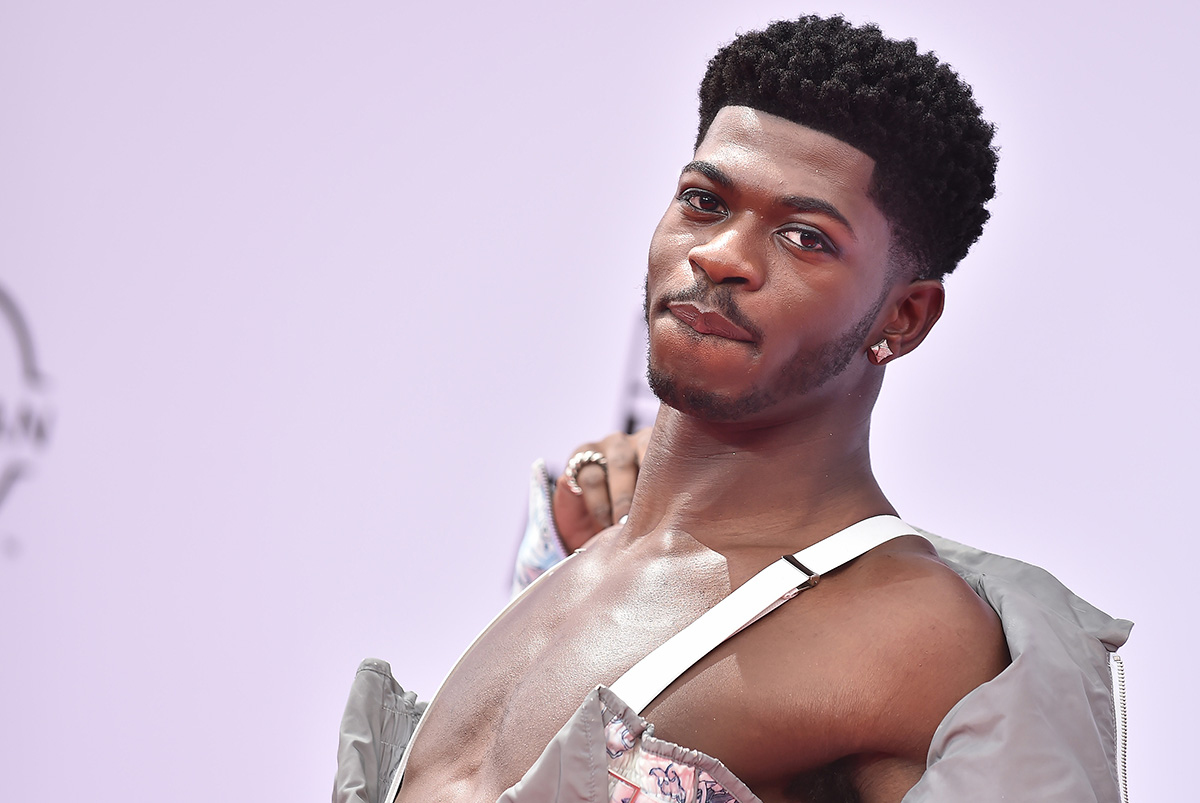
At a time when the world feels like it’s already choking on mouthfuls of disheartening news every day – genocide on the Gaza strip, climate crisis, political descent here and abroad – the last thing any of us want to hear about is another headline on a young star reportedly hospitalized following a possible overdose. Yet here we all are, watching a very familiar pattern unfold. This time, it’s our beloved queerby Lil Nas X.
According to TMZ, Lil Nas X, né Montero Lamar Hill, was reportedly hospitalized for a possible overdose mere months after he opened up publicly about how difficult the last few years of his career have been. He took to social media, stating, “I jumped straight into adulthood with extreme fame around me. So it was really nice to be just outside walking and meeting people in the streets and eating at restaurants, just even alone, spending a lot of alone time in solitude.”
Sound familiar? It should. The razzle-dazzling surface of fame seldom shows us the internal clutter and chaos, the pressure, the expectation to always be on, meanwhile mental health is brushed aside. And for our queer artists, particularly Black queer artists like Lil Nas X, the burden becomes that much denser.
We’ve seen this before. Demi Lovato. Aaron Carter. Whitney Houston. Talented, beloved artists who, for one reason or another, found themselves unraveling under the unrelenting scrutiny and chaos that comes hand in hand with fame. Some of them make it through. Some don’t. Many cry for help ages before things reach a breaking point. But what did we do? Did we listen? Did we leave Britney alone? Or are we the ones who light the match, pull out our phones, and film the flames? For once, please don’t tag me.
Lil Nas X sashayed onto the scene not just as a chart-topping artist, but as a cultural disruptor. Diva wore dresses to award shows. He clapped his cheeks on Lucifer in the music video for Montero. He vogued his way into the conversation on gender, sexuality, religion, and race that made a whole lot of folks uncomfortable, and that was the point. We were living for it, for him. We liked, we shared, and we reposted. We ate it tf up and licked our fingers clean. But did we ever truly care?
When a person like Lil Nas X steps out of the spotlight to say, “I’ve been having a hard time,” do we respond with any empathy, or just wait around for the next head turning lewk or satanic lapdance? It’s easy to forget that behind the headlines is a real human. One with a nervous system, a childhood, a family, and so much more. And, what most often goes ignored by all, a limit.
There is something particularly painful about seeing this happen to queer people in the public eye. We’re told that visibility is freedom. And to an extent, it is. Lil Nas X became a rare symbol of queer Black excellence in mainstream media, an unapologetic icon. But visibility without protection has the potential to be fatal. Fame doesn’t guarantee safety – not physically nor emotionally. As a matter of opinion, for queer people, it’s more often than not the opposite.
When you’re queer in the spotlight, you’re performing resilience first and music second. You’re expected to rise above, to remain unbothered, to smile at all times no matter the weight of the pressure, to be a walking teachable moment at every moment. And when you break down? People either turn their backs or turn you into a meme.
FACT: mental health in the queer community is already a crisis. Study upon study have consistently shown that LGBTQ+ identifying folks are at significantly higher risk for anxiety, depression, and suicide. Add international stardom to the mix, and you don’t get immunity from this. You get fast-tracked.
And yet, we continue to lap up these public struggles like entertainment. The media machine feeds on our thirst, and we keep clicking. Headlines about a “possible overdose” become the most clicked clickbait. Tweets become jokes. Vulnerability becomes viral.
So then we have the question, what does it mean to authentically support an artist like Lil Nas X, not just when he’s on stage, but when off stage as well? When the posts stop posting. When the glitter dulls. Are we prepared to support our icons through their harder times the way we do when they’re on top of the world?
We can start by changing how we engage. Honestly take a moment to ask yourself, are you clicking on these stories to gag or to understand? Are you giving compassion or commentary? Are you holding a mic to their cry for help, or are you fetishizing their struggle?
We also need to shine a light on the entertainment industry to offer real mental health resources and protections, especially for young and marginalized artists whose career they are both responsible for and profit immensely from. Care does not come hand in hand with fame. It’s often the reason care is a concern.
We don’t know the full story of what happened with Lil Nas X, and jumping to conclusions is like eating at Chick-fil-A: only those of low intellect are tempted. But what we do know is that someone allegedly ended up in the hospital after publicly saying they were struggling. That alone should be enough to warrant concern. Not for the gossip or clicks but for simple humanity.
Commentary
Over the Rainbow: The systemic rollback on LGBTQ+ Rights
From erasing rainbow crosswalks to defunded healthcare, queer communities are sitting front row to a coordinated effort to strip away decades of progress. Take this as a call to pay attention, and to action, before more rights quietly vanish.
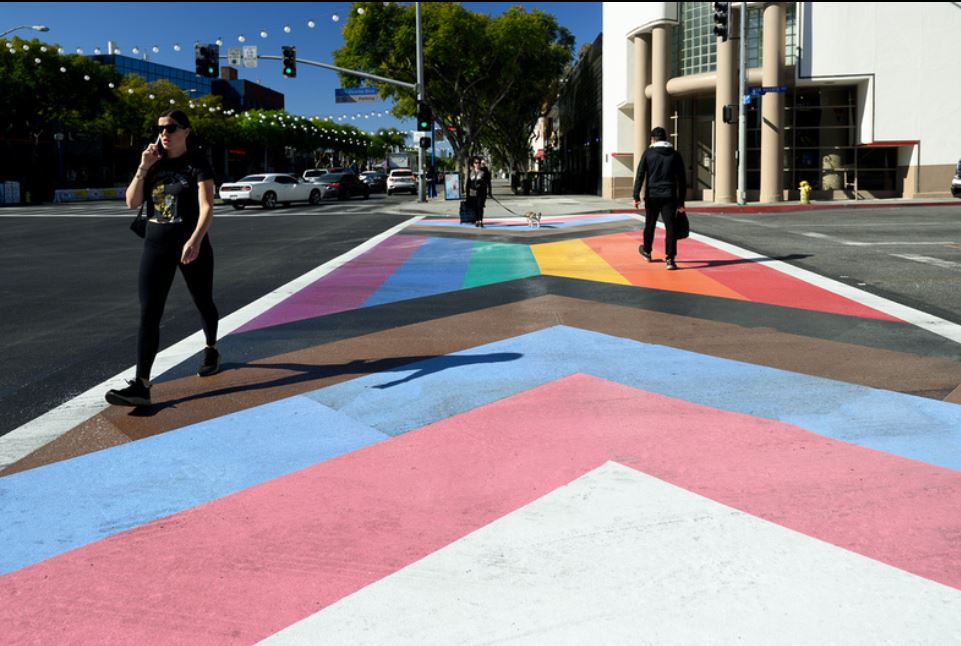
In the past decade, rainbow-clad crosswalks have popped up in cities across our country, serving as affirmations of long-overdue queer solidarity and resilience. But today, in more and more places, those colors are now being scrubbed away, painted over, and banned under new regulations. What may seem to some as an inconsequential repaving is, in reality, a call to action. It signals a shift away from inclusion, toward an erasure and the sanitizing of public spaces where visibility is becoming, once again, a luxury for select populations. This is not a simple matter of public art. It’s a matter involving power, belonging, and the right to exist as who we are.
Let’s see this for what it is. In stripping away our technicolor stripes, we also lose the unspoken sense of safety and acceptance that they provide to so many who need just that. Rainbows speak to an array of identities and experiences. Taking this away signals a return to conformity, and ultimately, invisibility. These crosswalks have long functioned as not just decoration but straight-up declarations. They say to LGBTQ+ pedestrians “You belong and you belong here.” Taking away these symbols actively communicates something just as loud yet far more bleak… “Not anymore.”
The erasure of Pride-themed crosswalks echoes a consistent pattern seen throughout American history where public symbols tied to marginalized groups are challenged, removed, or reframed under the gaslighting of neutrality and “tradition.” Just in the past few years, murals honoring Black leaders or giving voice to movements like Black Lives Matter have been vandalized, painted over, and removed after receiving backlash or through political pressure. In some cases, city officials have justified the removals by citing noncompliance with local ordinances or “divisiveness,” ignoring the reality that these images provide our communities with powerful affirmations of identity and solidarity.
Indigenous communities have faced similar symbolic erasure through the renaming of landmarks and suppression of their time-honored cultural practices. In some places in the States, school districts have banned Native regalia at graduation ceremonies using the argument that it conflicts with dress codes and willfully disregarding its deep- rooted significance. Still more, attempts to preserve monuments or language programs are frequently met with bureaucratic pushback, labeling these cultural expressions as “nonessential.” These moves are never one-and-done. They’re the first steps in a broader rolling back of visibility and voice. What starts with paint or policy often crescendos into something much much louder – unless communities recognize the signs early and step up .
Hillary Clinton recently sounded the alarm over the future of same-sex marriage in the United States, warning that the Supreme Court may soon “return the marriage issue to the states,” much like it did with abortion. In a stark comment that has since echoed across Queer advocacy circles both on and offline, Clinton advised LGBTQI+ couples to “get married now.” Clinton explained, “I don’t think they’ll undo existing marriages, but I fear they will undo the national right.” Her statement spotlights the sobering reality that rights once considered settled are no longer secure. Clinton is not simply politically forecasting here. In a way, she is calling us all to action, urging LGBTQ+ folks to safeguard what we can. Clinton’s words mirror a growing recognition that removing symbols – this time being our rainbowed crosswalks – tend to usher in judicial reconsiderations.
Meanwhile, Kim Davis – the former Kentucky county clerk who went to jail in 2015 for refusing to issue marriage licenses to same-sex couples – has petitioned the Supreme Court to overturn Obergefell v. Hodges. Davis, Represented by Liberty Counsel, argues that the landmark ruling is grounded in a flawed doctrine of substantive due process and describes it as a “legal fiction.” Liberty Counsel asserts that her First Amendment rights to religious freedom and free exercise were unjustly penalized, asserting that she should not have faced contempt, imprisonment, and a substantial monetary judgment just for simply “acting on her beliefs.” So this is where we are at.
In 2025, a sweeping wave of anti-LGBTQ+ policies has wrapped its talons around multiple levels of government, significantly lessening protections and visibility for queer and trans communities in our country. At the federal level, the Trump administration announced that starting in 2026, gender-affirming care will no longer be covered under the Federal Employees Health Benefits and Postal Service Health Benefits programs, affecting thousands of transgender federal workers and their families. Meanwhile, the Department of Education has labeled several Northern Virginia school districts, including Fairfax, Arlington, and Loudoun, as “high-risk” due to their upholding of inclusive policies for transgender students. These districts must now front over $50 million in education funding.
At the state level, hostility toward LGBTQ+ rights has swelled. More than 700 anti-LGBTQ+ bills have been introduced or passed in 2025 alone, targeting everything from flag displays to healthcare access. In Utah, Pride flags are now banned from government buildings, with daily fines imposed for noncompliance, while funding for Pride events has been drastically reduced. Nowhere is this oppressive legislative surge more aggressive than in Texas, where over 200 anti-LGBTQ+ bills have been introduced, including measures to restrict gender-affirming care, erase gender identity from official records, censor LGBTQ+ topics in schools, and redefine legal sex in rigid binary terminology. Stacked up, these developments represent a coordinated campaign to reverse decades of progress.
What can we do? First, we have to stay engaged. For starters, stop telling people that the news is too depressing to watch and find an outlet or three that resonate. Also, attend city council meetings, demand transparency from elected officials, and hold leaders accountable. Push for alternative expressions of support (public art, monuments, the whole gamut) that preserve the spirit of inclusion even when laws change.
Ultimately, we must amplify visibility. At a time in our country’s story where silence is easily mistaken for obedience, communities must get louder than ever in affirming their values. Take photos, tag photos, share stories, and call out those in places of power. Our rainbow crosswalks may be dropping like soldiers but the people they represent are still standing. Despite this bleak climate, WorldPride 2025 was held in Washington, D.C., doubling as both a queer-centric celebration and an indisputable act of protest against these escalating threats. Let’s keep that energy going, shall we?
In the end, what’s at stake is much greater than paint on pavement. It’s the affirmation that everyone deserves to be protected regardless of their identity. Let’s not wait until the last color is washed off our streets. Let’s repaint and resist. Let’s reimagine a country where all of us belong, every shade on that rainbow we hold so dear. We’re not red, white, and royally f*cked quite yet. Let’s make sure we never are.
Opinions
State Department’s new human rights reports are silent. We refuse to be
LGBTQ+ people ‘erased’ from 2024 report
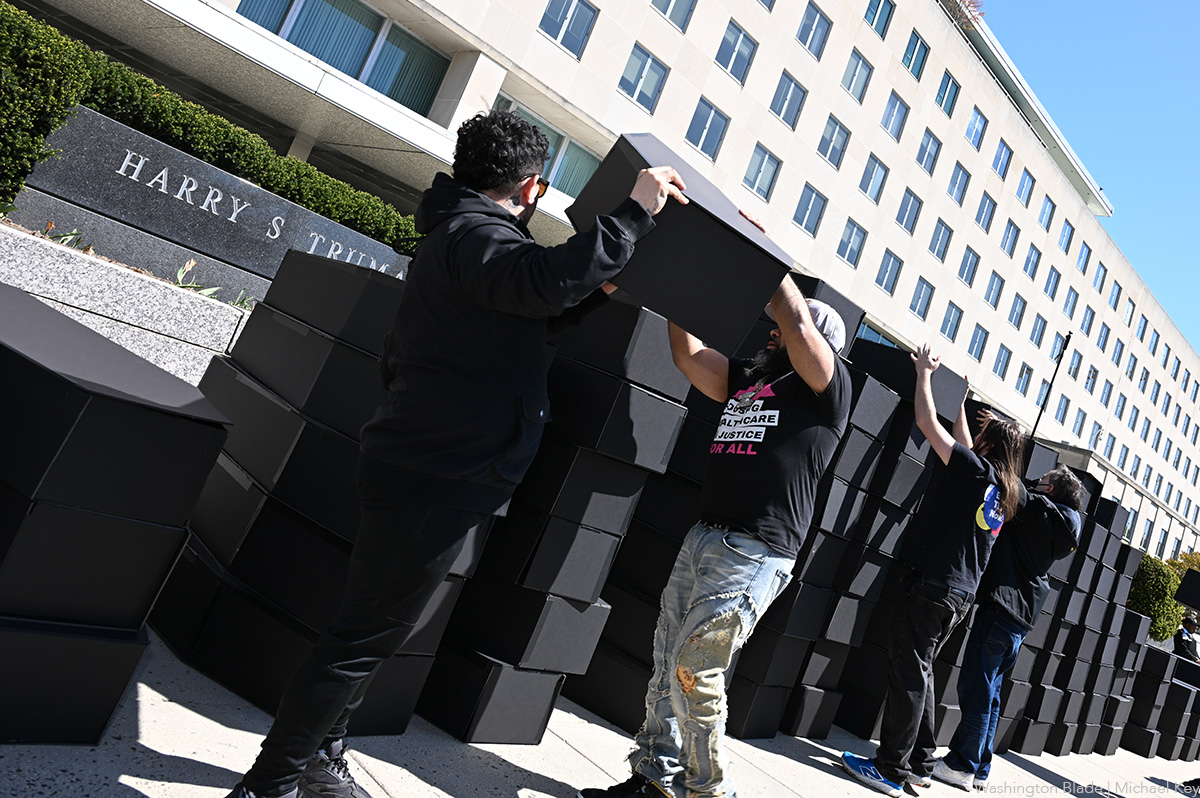
In Dhaka, Bangladesh, a young gay man who had traveled five hours to meet us at the U.S. ambassador’s residence spoke softly about the violence he endured. For years, activists like him would meet with U.S. officials to tell their stories, trusting our government to publish their truth for the world to hear. Last week, the Trump administration betrayed that trust and cast aside decades of bipartisan work. Instead of fair and accurate reporting, it systematically deleted almost all references to abuse and persecution of lesbian, gay, bisexual, transgender, queer, and intersex (LGBTQI+) people in the 2024 U.S. Department of State Country Reports on Human Rights Practices, known as the Human Rights Reports (HRRs).
Mandated by Congress since the 1970s, the HRRs cover every country in the world. They are an essential resource for courts, governments, and non-governmental organizations (NGOs) in evaluating human rights abuses, allocating resources, and crafting policy. Though the reports originally did not cover anti-LGBTQI+ violence, persistent education and advocacy from our community led Republican and Democratic administrations, including the last Trump administration, to document abuses based on sexual orientation, gender identity, and sex characteristics annually for the past two decades.
When we served as the Office of the U.S. Special Envoy for LGBTQI+ Rights, these reports were a priority. During our service, we reviewed and incorporated reporting from our embassies, the UN, NGOs, universities, media, and — most importantly — from survivors themselves. By the time we left government in January, every country’s report contained a dedicated, robust section documenting abuses against LGBTQI+ people.
These sections filled a void. They mapped where U.S. investments in human rights could do the most good, reinforcing work by human rights defenders, foreign governments, and allies to make the world safer for LGBTQI+ people. They helped asylum judges evaluate claims from LGBTQI people fleeing persecution. They told activists that their struggle was seen.
This year, the Trump administration did the opposite. After a long delay, they released them last week during the congressional summer recess in order to bury the truth. They erased whole categories of abuse and watered-down others, including against women and girls, workers, indigenous peoples, people of African descent, Roma, and LGBTQI+ people. The LGBTQI+ section was deleted outright. A keyword search across all the 2024 reports we’ve read yields almost nothing: no “LGBTQI+,” virtually no “sexual orientation,” no “gender identity,” no “intersex.” What few references remain are shortened, sanitized, and buried deep.
Read the 2024 chapters for Uganda and Russia, and you might believe there are no LGBTQI+ people or abuses in either country. But read the report from 2023 and you’ll see 45 reports of anti-LGBTQI+ abuses in Uganda and 36 in Russia. Clearly, it is not possible to resolve such systematic abuse in one year. Instead, our State Department just removed any reference to most of the most egregious abuses of LGBTQI+ people worldwide.
In Iraq, for example, parliamentarians passed an anti-LGBTQI+ law that equates homosexuality with “prostitution,” and punishes same-sex relations with up to 15 years in prison. But that law, reported on in 2023, gets no mention. Same in the Kyrgyz Republic, where a nationwide “LGBTQI+ propaganda” law forced a shutdown of perhaps the country’s oldest LGBTQI+ service provider. No mention. And, in Afghanistan, unspeakable acts of anti-LGBTQI+ violence and abuse at the hands of the Taliban, all reported last year, are gone too.
This erasure is deliberate. It tells authoritarian governments they can abuse minorities with impunity. It also signals to Americans that LGBTQI+ equality is negotiable here at home, too, landing just as the Supreme Court received a petition to overturn marriage equality.
But here is the truth: erasure has never defeated us. Visibility has always been our movement’s most powerful tool — and history shows it cannot be permanently denied. From Stonewall to marriage equality in the United States to countries around the world that have struck down sodomy laws and codified transgender rights, LGBTQI+ people have always overcome silence with courage and persistence. Across continents, when they try to erase us, we turn exclusion into progress.
The administration’s refusal to report on human rights abuses of LGBTQI+ people and other marginalized groups is a political act, not an accident. We urge you: call your U.S. senators and representatives today via the Capitol switchboard, (202) 224-3121, and ask them to confront the administration for failing to do its job on the HRRs and pass Senate bill S. 2611 mandating that future reports cover LGBTQI+ rights and other key categories. We urge other governments to expand their own reporting to rigorously document and condemn abuses. All of us can fill the gap by elevating high-quality data from NGOs, universities, and think tanks that are already setting the global standard for reporting on the status of LGBTQI+ people around the world.
The administration may rewrite its reports to fit its narrow view of the world, but it cannot erase the courage of those who tell their stories or the victories we have already won. Our history as LGBTQI+ Americans proves that visibility, once claimed, cannot be buried for long. The task before us is simple and urgent: to insist on truth, to defend it in every forum, and to carry it forward until equality is beyond erasure.
Jessica Stern is a Senior Fellow at the Carr-Ryan Center at the Harvard Kennedy School and co-founder and principal of the Alliance for Diplomacy and Justice, an organization co-founded by eight former ambassadors, special representatives, and special envoys advocating for human rights in U.S. foreign policy. She is the former executive director of Outright International and the former U.S. Special Envoy for the Human Rights of LGBTQI+ Persons.
Suzanne B. Goldberg is the Herbert and Doris Wechsler Clinical Professor of Law at Columbia Law School and former senior advisor in the Office of the Special Envoy to Advance the Human Rights of LGBTQI+ Persons.
Reggie Greer is a Global LGBTQI+ Fellow at the Harvard Kennedy School and a former Biden-Harris Administration appointee, serving as Senior Advisor to the U.S. Special Envoy to Advance the Human Rights of LGBTQI+ Persons as well as White House Director of Priority Placement and Senior Advisor on LGBTQI+ Engagement.
Commentary
Grindr’s glow‑up: What it means for queer pleasure and platform
Grindr has leveled up from flirty (and sometimes endless) chats to a full-on curated cultural platform for the sex positive queer community. Will it be the future of queer connection or a digital minefield waiting to detonate?
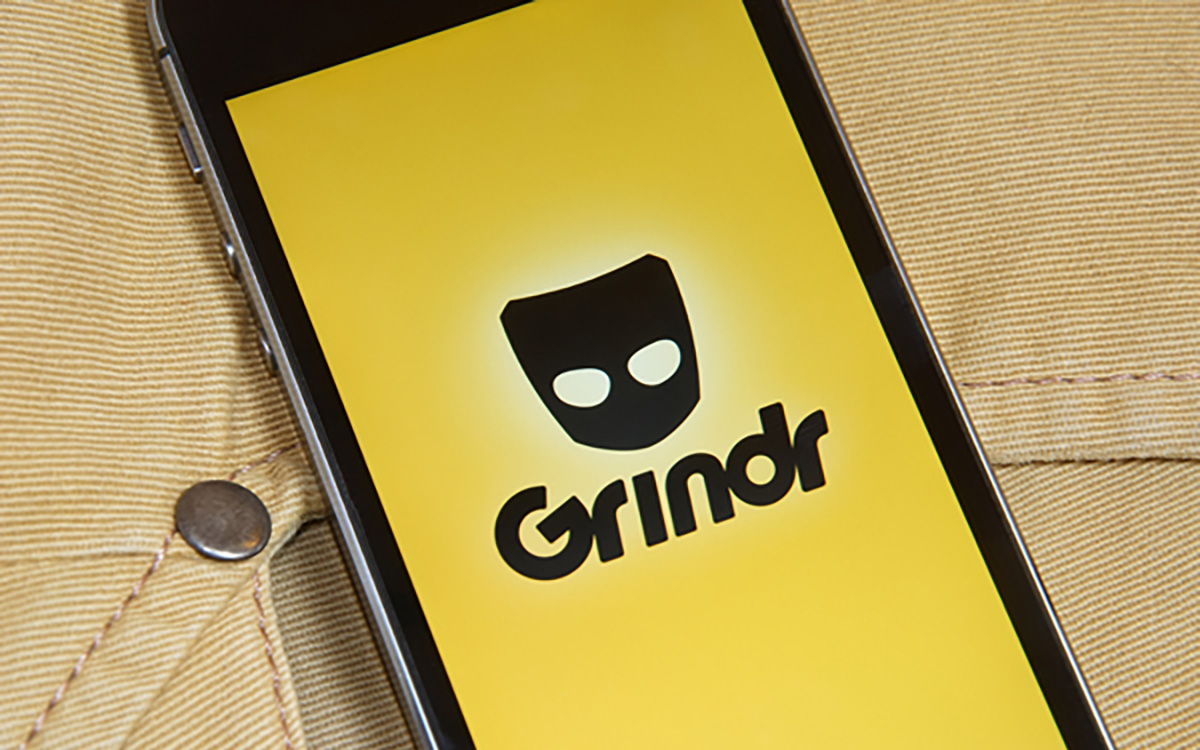
Cruising once meant lusty side-glances in our cities’ inconspicuous public parks, pubs, and even the phone booths at Macy’s. Nowadays it’s the far too familiar swipe, grammatically flawed DM, and the vast sea of headless torso pics. Grindr, once the ever so modest rosebud of today’s digital gay cruising, has now bloomed into so much more, upping its game with new features similar to other social media platforms, infusing it with AI matchmaking, and uncensored content under one rainbow‑tinted roof. Is the only connection that matters these days a decent Wi-Fi connection? Arguable.
Grindr’s legacy began as the grid‑style, location‑based hookup platform that we all know and love… to delete only to reinstall two days later. Simple, sexy, and surface-level satisfying. Today, however, Grindr is going under a bit of a nip/tuck. Infused with AI‑powered personalization (think of it like an AI wingman), global discovery (“Discover”) and travel tools like “Explore Heatmap” and “Travel Pass” that give you jet‑setting Gayborhood vibes in real time.
Already at play is the new feature Right Now, a lusty live‑feed not too different from a disappearing story on poppers – post a pic or text that vanishes after an hour – with users now able to signal, “get in me bro,” getting straight to the di… to the point.
But Grindr hasn’t stopped there. Queue Grindr Presents, a hot hot hot new in‑app content hub that offers all types of queer media like video series (hello, Katya’s Who’s The A-hole?), playlists, editorials, behind-the-scenes tour clips, and then some. A pinch of Instagram, a touch of TikTok, a mouthful of YouTube, all intertwined into our shiny new Grindr.
At the core, it’s your hookup app and a commune of queer media. Your one‑stop stop shop for one (hopefully) uncensored and fabulously fae content feed. Grindr describes it as “an unapologetically safe space where the community can be themselves, be heard, and be fabulous without fear of suppression.” Cool, yes, but what about the unfiltered side of that freedom?
With this digital facelift, Grindr Presents could quite possibly be a girthy gold mine. For adult content creators, it has the potential to be the new brightly lit stage for visibility to fuel income. Expand your brand beyond X, Bluesky, and other password‑protected peen-clad platforms. Get attention from a captive (and c*ck-hungry) audience right when they’re browsing for… connection.
For creators, the above-mentioned AI features help users reconnect. A‑List picks out your hottest yet perhaps more reluctant potential matches, giving creators more chances for recurring benefactors. Chat summaries allow casual viewers to re‑engage without repeating the same flirtatious verbiage. Meanwhile, global discovery tools have the potential to reach new audiences for your content without a passport or risking flying out from Newark.
Let’s talk about Sniffies for a moment. For those who are unfamiliar, Sniffies is our beloved map‑based cruising platform that didn’t bat an eyelash at explicit photos and mapped nearby users and cruising grounds worldwide. It made its iOS debut in March 2025 only to be yanked by Apple around late May due to “ongoing content restrictions” despite implementing a “Safer Work Mode.” The website remains, but the app was scrapped.
This brings up a deliciously delicate question: could Grindr face the same fate? Both Grindr and Sniffies cater to queer cruising, and both push sexual content boundaries of the status quo. The difference is that Grindr has been Apple‑approved to this day. It does have the authority to sanitize profile pictures (would you settle for PG-13?) and frames itself as “dating” as opposed to cruising or hooking up. Sniffies’ unapologetically overt purpose to get down likely was the catalyst for a multitude of sanitized corporate scrutiny whereas Grindr’s more nuanced facade was given the green light.
Still, with Grindr Presents delivering uncensored queer media, even if curated, the Apple gods might clutch their pearls. Particularly in our current political climate where queer content is increasingly met with rigid censorship. But Grindr’s mainstream status and framing as a “social hub” rather than purely pornographic might give it more freedom, for the time being at least.
With Grindr being so free from censorship and regulation, it teeters on the familiar fine line between freedom of speech from salacious to unsavory. Let’s look at X as an example, the same platform that gave voice to the Black Lives Matters Movement while also holding space for white supremacists. On one side of the coin, no censorship means creative freedom, raw authenticity, spontaneous connection, and radical queer expression. On the flip side, it opens the door for hate, trolling, fetishization, and unsafe content to flourish if left unchecked, especially for vulnerable communities.
Grindr’s task then is to enable expression without sliding into the waters of harmful content or hate speech. The platform’s safety, moderation, and responsibility will inevitably be tested. Without a watchful eye, Grindr Presents could become a megaphone for extremist and regressive voices, or at the very least, spotlight internal community biases. Yes, free speech is hot, but unmoderated speech can be a real buzzkill.
Only time will tell which trajectory Grindr is set on. Ignite an eruption of queer creativity and creator‑centric monetization, or get tangled in regulatory red tape, or worse, push back from within the community. Grindr has evolved from a quintessential hookup app into a multifaceted platform functioning as a gay social hub and media outlet. In today’s climate of growing anti‑queer censorship, the challenge will be striking a balance between moderation and freedom of expression.
So, sweet little cruisers, charge your iPhone, swipe that grid, and drop into Grindr Presents. Let your curated content ride the wave. The digital cruising scene is evolving, and Grindr is the savvy (and maybe scandalous) chauffeur ushering us into a new day and age of getting that d. Let’s buckle up and pop our PrEP. It’s gonna be a wild ride.
Commentary
Why California must remove the roadblocks to safer streets
West Hollywood City Councilmember John Erickson addresses interpersonal politics getting in the way of street safety, specifically on Fountain Ave.

By John M. Erickson, West Hollywood City Councilmember and Candidate for California
State Senate District 24
California is home to some of the most innovative thinkers and boldest visions in the world. We have led the way on human rights and climate change. Yet sometimes, interpersonal politics get in the way of implementing the simplest, most straightforward ideas—even when it means saving lives.
A glaring case in point is what is happening on Fountain Avenue—a street that twists and turns from Los Angeles through West Hollywood and has become a hazard that can easily be fixed by infrastructure changes, but has been caught up in a nonsensical process that has become more political than practical.
Since March 2021, just a few months after I was sworn in to the West Hollywood City Council, I authored legislation to redesign Fountain Avenue because of the weekly near-fatal or fatal accidents that occurred there. My proposal was straightforward: add protected bike lanes, widen sidewalks, and calm traffic so that people can move safely whether they’re walking, biking, or driving.
The council voted 5–0 in favor. The public supported it. Experts endorsed it. The need was beyond obvious.
And yet—here we are, six years after that first vote, and nothing has changed. The City Council has taken six separate votes just to approve a street design we unanimously agreed on in 2021. Why?
I believe it is because in our car-centric society, age-old ideas of public safety and interpersonal politics have gotten in the way of upholding the first responsibility of an elected official: to keep people safe. In the meantime, multiple people have been struck and killed by cars on Fountain Avenue, the most recent happening right across the street from my home. Every day we delay implementing the changes we approved years back, we are jeopardizing people’s lives, and as one public commenter said at our last city council meeting, the process is killing people.
This is not just a West Hollywood problem. This is a California problem. Across our state, commonsense projects that would make communities safer, greener, and more livable are caught in an endless tangle of redundant approvals, over-engineered reviews, and bureaucratic inertia. We’ve built a system that treats progress—even public safety—as something to be studied into submission rather than acted upon with urgency.
We need structural reform to change that. Here’s all it should take to make our streets safer for everyone:
- Set clear timelines for infrastructure changes—and stick to them. If a city council votes to
approve a project concept, the clock should start. Departments and agencies must meet
hard deadlines for design, environmental review, and groundbreaking. Endless “re-
authorizations” only add delay and cost lives and waste taxpayer money on this endless
cycle. - Limit duplicative votes. Six council votes for a single street project is absurd, and frankly,
maddening. All it should take is one vote to approve the concept, one vote to approve the
final design, and then build it. We need to get back into the business of doing things rather
than talking about them to death. - Empower staff to act. Once elected leaders set policy direction, professional staff should
be able to carry it out without returning to the council for permission every step of the way.
Accountability shouldn’t lead to paralysis. - Adopt “safe streets first” protocols. If a corridor is identified as high-injury, safety
improvements should be fast-tracked—not forced to compete with routine maintenance
projects for years on end.
I am working to implement these changes—not just for Fountain Avenue, but for every community waiting on a safer crosswalk, a protected bike lane, a new housing development, or a climate-resilient infrastructure project. Because if we truly value human life as we claim, our actions cannot sit idle in a staff report. They must mean more than cutting a ribbon or holding a vigil at the site of a fatal accident.
The time has come to take swift action to legislate the infrastructure change process, so that our actions can live up to our number one responsibility as elected officials: keeping the public safe, whether they are in a car, on a bicycle, or walking.
Commentary
The Westside is unaffordable. Allowing for more housing can help
Three young Westside elected officials call for urgent action to fix our housing shortage—and make room for the next generation.
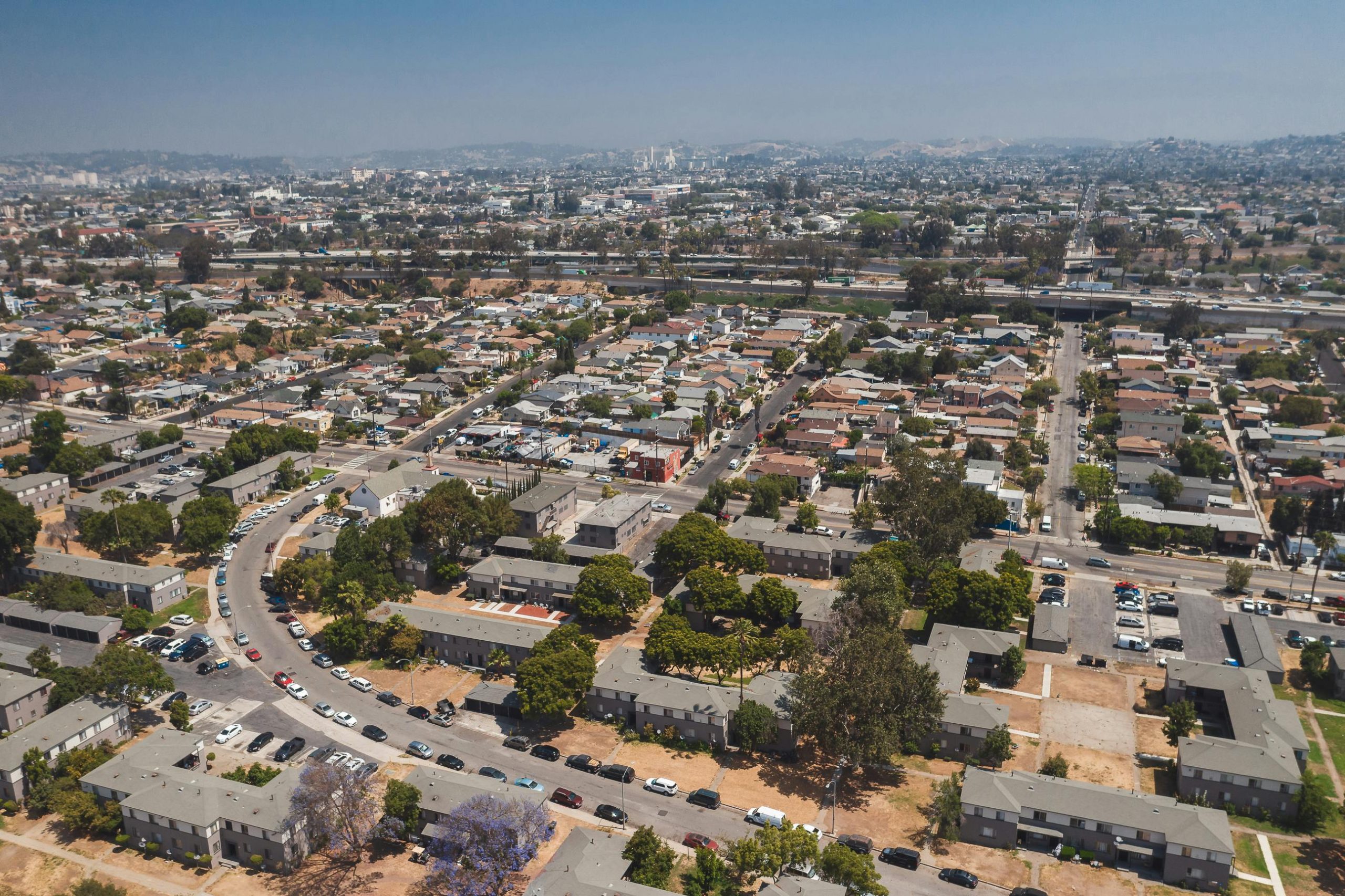
Over the past few decades, LA’s Westside has changed rapidly. Rents have skyrocketed. The median home now costs over 12 times the median household income—one of the worst ratios in the state. Our housing shortage is pricing out the immigrants, artists, workers, people of color, and young people who make the area so vibrant.
As three elected officials under 40 representing West Hollywood, Santa Monica, and Culver City, we’ve experienced this crisis firsthand. Countless young people in our cities can’t afford to build a life in the communities they grew up in, and others who made their home on the Westside because of its inclusivity are now being displaced by a housing market becoming more unfriendly every year.
For decades, West Hollywood has been a refuge for LGBTQ+ people who couldn’t live openly elsewhere, and both Santa Monica and Culver City were home to large working-class communities. But today’s housing costs are pricing out many of the Westside’s young queer people, workers, Black and brown residents, and seniors hoping to retire.
The affordability crisis is hitting our queer communities especially hard. LGBTQ+ people in LA County are more likely to rent their homes –and more likely to be cost-burdened by housing – than their straight counterparts. Queer people are twice as likely to have experienced homelessness within the past five years. For trans and nonbinary folks, the difference is even more stark. 25% of trans and nonbinary people in LA County are currently unhoused compared to 1% of the general population.
We understand that the housing shortage has been a direct result of decades of policy failures in our cities – and it’s beyond time we finally address it with urgency. If we want the Westside to remain a welcoming place –not just for the wealthy, but for everyone –we have to make it possible for more people to live here. That means building more homes.
Enter SB 79, a bill under consideration in the state legislature that would make it legal to build small apartment buildings near major transit stops. It’s desperately needed across LA —but especially in communities like ours, where access to cleaner air, strong schools, and good jobs should be available to more than just long-time homeowners and the wealthy.
Too many neighborhoods around LA’s transit stations are still reserved exclusively for single-family homes, even as taxpayers have invested nearly $80 billion in expanding our public transit system. That keeps housing costs sky high and prevents working families from living anywhere near them.
The result is both unjust and inefficient: underused transit, supercharged housing prices, and the workers our city relies on being subjected to hours-long commutes.
It doesn’t have to be this way.
We know that when there’s housing near transit, people use it. At stations like MacArthur Park and Wilshire/Vermont—which are surrounded by apartments—tens of thousands of riders board each day. And when we reduce car dependence, we also reduce pollution: climate experts estimate that adding homes near transit can cut climate-warming pollution by up to 31%.
Some worry that new housing causes displacement. But history and research show the opposite. When we don’t build enough homes, demand spills over into older, more affordable neighborhoods — driving up rents and pushing low-income renters out. By making room for more people, we’re actively reducing pressure on existing tenants.
On the Westside, we’ve fallen behind. We’ve created tens of thousands of high-paying jobs, but built far fewer homes; indeed, the populations of Santa Monica, Culver City, and West Hollywood haven’t grown meaningfully in over 50 years. That stagnation, driven by restrictive zoning, has priced out all but the most affluent.
SB 79 gives us a chance to change course.
This is about more than zoning. It’s about who gets to live here and what kind of communities we want to be. Are we comfortable becoming a place of diminishing diversity, where only the wealthy can belong? Or can we foster places where teachers, nurses, service workers, artists, LGBTQ+ people, and young families can still build their future?
We’re proud to represent cities committed to tackling this crisis head-on. With SB 79, our state will take a major step toward a more affordable, inclusive future.
Chelsea Lee Byers is the Mayor of West Hollywood, Jesse Zwick is a Santa Monica City Councilmember, and Bubba Fish is a Culver City Councilmember.
-
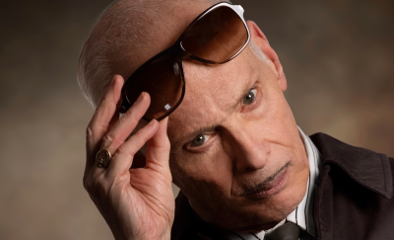
 a&e features5 days ago
a&e features5 days agoJohn Waters dishes on upcoming Unleashed LGBTQ+ appearance and connecting with new generations on the road
-

 a&e features5 days ago
a&e features5 days agoGet swept away by ‘Sparks Camp,’ the Philippines’ first gay dating show
-

 Los Angeles4 days ago
Los Angeles4 days agoLGBTQ+ proponents respond to “devastating” Supreme Court ruling
-
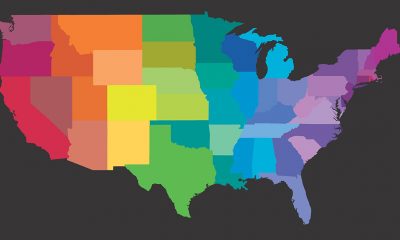
 Opinions4 days ago
Opinions4 days agoWe are everywhere — our LGBTQ media are not: report
-
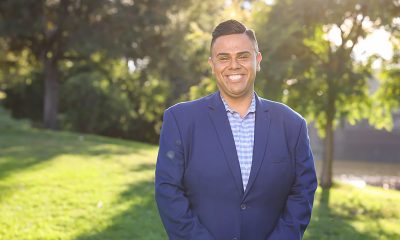
 AIDS and HIV20 hours ago
AIDS and HIV20 hours agoAssemblymembers urge Governor Newsom to sign “lifeline” bill for HIV medication
-

 Theater2 days ago
Theater2 days agoThe Palm Springs historic Plaza Theatre to reopen, celebrating its past by looking to the future
-
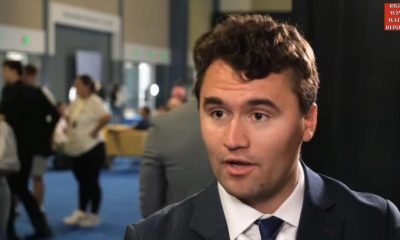
 COMMENTARY4 days ago
COMMENTARY4 days agoDon’t miss the liberation in the silencing of Charlie Kirk
-

 National4 days ago
National4 days agoMilitary families challenge Trump ban on trans healthcare
-
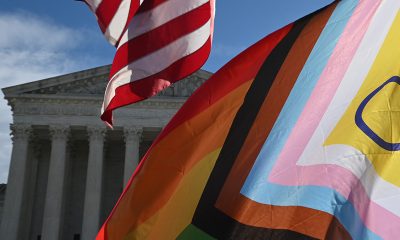
 National4 days ago
National4 days agoSupreme Court sides with transgender boy in bathroom access fight
-

 Features4 days ago
Features4 days agoKristie Song joins the team at the Los Angeles Blade as a California Local News Fellow
